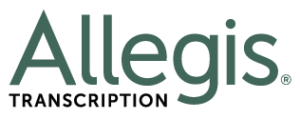Why Detailed Notes Are an Essential Part of the Insurance Claims Process
If you’re an insurance claims adjuster, you probably understand just how important it is to complete your case files in a timely fashion. However, getting the job done the right way is just as vital as sticking to departmental timeframes. Here are five reasons why having detailed notes is an essential part of the insurance claims process.
Reason #1: Determining Negligence
Determining a negligence percentage for a particular claim is a large part of an insurance adjuster’s job. Whether you are trying to decide if your insured caused a significant incident or a claimant is solely at fault, having detailed notes will help you accurately make this calculation during the insurance claims process. By including factors such as weather, a Google map of a specific intersection, or other pertinent information with as many specifics as possible, you can ensure that you are making an informed and correct decision based on the facts you’ve gathered within the file.
Reason #2: Detecting Fraud
Another reason to take detailed notes in your case files is that sometimes details change, which is a major indicator of fraudulent reporting. By being able to compare a wide range of factors and statements at any given time based on what you’ve included as part of the claim, you can easily determine whether or not there is a need for additional review by your special investigation unit or other, similar department. Furthermore, the information that you’ve gathered in the file could help fully determine whether or not there is actually an issue as the team goes through its own processes.
Reason #3: File Handling in Your Department
If the insurance company you represent is like most, there’s a good chance that several different people in your department will handle the file before it is ultimately closed. Having detailed case file notes ensures that anyone can pick the insurance claims process up right where you left off. This is especially helpful if you are away from the office over a period of time or a caller reaches another member of your team. In addition, it is best to look at this from an alternate viewpoint—if you had to read through a claim handled by a coworker, would you want to have as much information as possible? Chances are good that you would.
Reason #4: Future Arbitration
Detailed notes are also essential when it comes to any future arbitration efforts. As you probably already know, Arbitration Forums does not accept audio files and only allows written submissions as part of an argument. While including a recorded statement transcription is nice, sometimes it is important to include much more in order to accurately present your side. In addition, there are times when an insured’s statement doesn’t do much to help your case. Those instances are where having accurate and complete case note files can mean the difference between a win or loss with the arbitrator.
Reason #5: Possible Litigation
One of the most overlooked aspects of case files by insurance claims adjusters is that their notes could become part of litigation proceedings. While the chances of this happening are slim, it is always important to keep this possibility in mind when you are completing your files. Ask yourself if you are including enough information for your company’s legal team. Would they be able to decipher what is going on with the file and how it is moving forward? Make sure your notes are free of any jargon or “text speak” that can make your company look less than professional.
Of course, one of the easiest ways to add extra detail to your claims files is by utilizing a company that offers transcription services. By pairing a textual version of recorded interviews with complete notes, you can ensure that the settlement process goes smoothly and is settled accurately and fairly—no matter what happens with the case.


